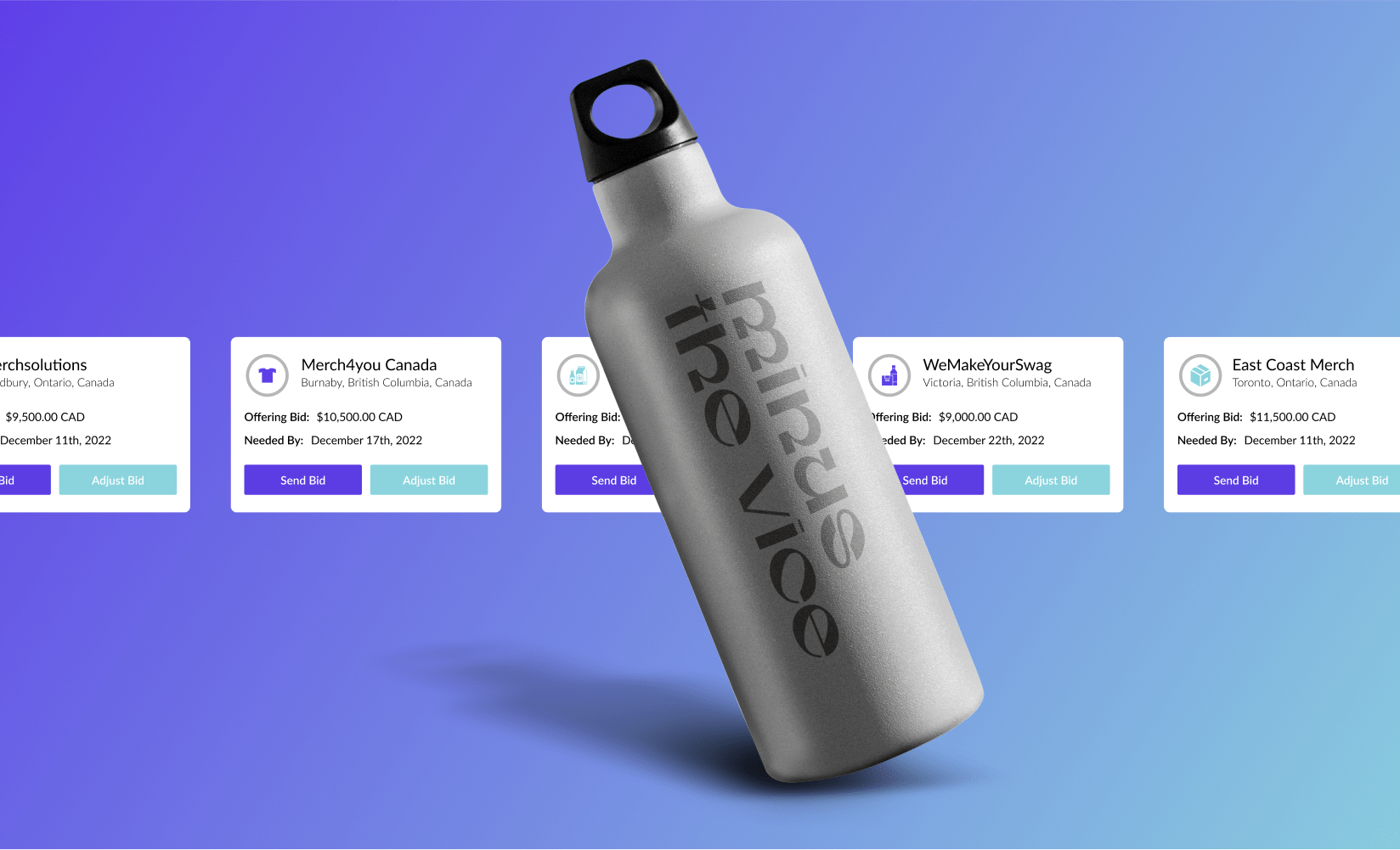5 Tips For How to Reduce Operating Costs For Your Ecommerce Business

Profitability in business isn’t all about the number of sales you rack up. You have to account for your cost of operations rising with the growth of your company.
That’s why you need to closely monitor your expenses to ensure you get optimal returns from those increasing sales.
Your operational costs are many and varied. They include both the ‘hidden’ costs (which might seem insignificant individually) and the more visible larger expenses.
Your business’s financial health depends on managing cash inflow and operational expenses effectively.
I’ve had first-hand experience running a growing ecommerce business as the founder of Acme Hat Company. Over the years, I’ve found success by implementing certain strategies for reducing certain operational costs.
In this post, I’ll cover five ways you can reduce operating costs strategically in your ecommerce business so that you can realize all those exciting profits. I’ll also share my own personal experiences with cutting operating expenses at Acme Hat Co.
First, let’s define the idea.
#cta-visual-pb#<cta-title>Build landing pages that convert<cta-title>Design beautiful and high-converting landing pages on your own with Shogun Page Builder—no coding required.Start designing today
What are operating costs for ecommerce brands?
Operating costs in an ecommerce business are the day-to-day expenses of keeping things up and running. These costs are called ‘overheads,’ and they vary from brand to brand and industry to industry.
In an ecommerce business, the primary operational expense is the cost of goods sold (COGS). But beyond that are other extra expenses, such as:
- Utilities
- Website hosting and maintenance costs
- Shipping costs
- Inventory management
- Asset and equipment maintenance
- Marketing and advertising
- Labor costs
- Employee pensions, insurance, and other perks
- Taxes
- SaaS subscription services
Managing these basic ecommerce business expenses can certainly have a learning curve. As the business grows, your overhead costs will change.
Variables like the cost of shipping, which can rise or fall depending on external factors, need to be closely monitored. It’s certainly something I’ve struggled with in the last few years.
For example, during COVID, the shutdowns of factories in Bangladesh—which is a huge manufacturing base for textiles—caused significant supply chain disruptions for Acme Hats.
While there are some costs you can’t avoid, there are several places you optimize your spending to reduce your overhead and drive more revenue. Let’s look at five ways to do that.
5 Tips for how to reduce operating expenses in business
Running a business involves several processes and activities—thus, cost-cutting isn’t an easily definable activity.
You need a combination of strategies and steps to optimize your business operating costs. Implementing cost-saving strategies will boost your business profits.
Here are a few ways to get started.
1. Automation of routine tasks
Automating business tasks means reducing the time spent performing repetitive things. But beyond saving time, automating tasks can also:
- Allow your staff to spend time on more important responsibilities
- Improve the efficiency of your team
- Reduce the risk of human error during rote tasks
You can automate many routine tasks. Optimizing how you receive orders is a big time saver for ecommerce businesses.
From when the customer places an order to when they receive it, there are many moving pieces that can be automated with triggers for order confirmation, fulfillment, tracking, and more.
With the automation tools like Brightpearl, you can automate order fulfillment processes like payment and order confirmation, warehousing, shipping, and accounting.
That’s just scratching the surface. There’s a lot more you can and should automate.
I would recommend automating certain customer service functions, for example. With the emergence of advanced AI chatbots, you’ll be able to handle most customer inquiries freeing your team to handle only the most complex issues.
Inventory management and ecommerce marketing efforts like customer segmentation and email marketing should also be automated.
Automation reduces your workload and streamlines customer support activities.
You can use various technologies to automate routine tasks in your ecommerce business. Here are some useful tools to consider:
- Inventory management systems, such as Katana and Zoho Inventory
- Email marketing platforms like ConvertKit, GetResponse, and MailChimp
- Customer service platforms like Zendesk, Freshdesk, and Hootsuite
- Ecommerce CRM such as HubSpot, Salesforce, and Klaviyo

Many of these are available as apps for ecommerce platforms like Shopify, BigCommerce, and Adobe Commerce, seamlessly integrating to create more efficient workflows across all parts of your business.
As a first step, I recommend you create a list of routine tasks you can automate. Then, create your tech stack list and research all the possible solutions.
Select tools with a good reputation in the industry and are backed by factual performance data, positive reviews, or other forms of social proof.
You’ll also want tools that integrate with your existing platforms.
2. Telecommuting
Renting a physical office space is expensive. You need to pay for office utilities, cover transport for full-time employees, and manage extra day-to-day expenses.
Shutting down your physical office and letting team members work from home is an option that can save you thousands of dollars.
According to Global Work Analytics, nearly six out of ten employers slashed operating costs by going remote. That’s to say, telecommuting is very effective for cutting costs.
More so, telecommuting allows your employees to work from home.
As a result, they skip the commute time and invest their energy and extra time in the job, which translates to more productivity.
If it makes sense for your company, start by ditching the office space and investing in collaboration and communication technologies like Slack.
This will help kick off remote working for your ecommerce business.
Mathew Gattozzi saves money by communicating with clients and employees about ongoing projects via Slack.
He maintains a channel for different teams/goals. For example, he has several channels for client relations and separate channels for internal communications to manage different projects with his team.
@matthewgattozzi Slack has been so great for me and my team!
Ditching the office means you can hire remote employees.
That can reduce your operational costs and increase your labor pool. For these reasons, building out a remote team can make sense.
It’s certainly something that works well for me.
However, it won’t make sense for every business. Or, indeed, every part of the business. Working remotely might work for the senior leadership team and people in the marketing department.
However, your warehouse staff still needs to turn to the premises daily. Otherwise, your goods won’t be created or delivered.
3. Outsource non-essential business functions
You might want to explore outsourcing non-essential business functions in your ecommerce brand, especially as you grow.
The roles you outsource will depend on the skills of your core staff.
For example, at Acme, we’re great at logistics and customer service. However, I don’t have anyone on the team with experience running paid ads.
Ecommerce marketing is essential.
You need people who are on top of the latest trends, experts in their field, good at visualizing data, and top-notch at interpreting trends. Hiring people like this yourself requires a significant investment.
Outsourcing your marketing needs can provide a good return on investment, free up your time, and boost sales in the short to medium term.
You might want to bring these functions in-house over the longer term, though, so you have more control over things.
Advertising isn’t the only non-essential thing ecommerce businesses can outsource. You can outsource inventory, sales, human resources, website design, etc.
At Acme Hat Co, I outsource various functions to agencies. For example, I contacted a web developer when I needed a new sales page.

At this stage, I don’t need a full-time web developer on my staff. It just didn’t make sense.
Alternatively, you could use an app like Shogun Page Builder to quickly create stunning landing pages without hiring a developer.
I also have a virtual assistant to manage some internal admin and finance tasks that I want off my plate.
Again, reduce operating expenses by subcontracting non-essential tasks to skilled freelancers and industry experts.
Letting them handle specific tasks can minimize the financial load on your ecommerce business. You just budget for project, part-time, or hour-rated rates.
#cta-visual-pb#<cta-title>Spend less on stunning store design<cta-title>Don’t worry about hiring developers—just design it yourself with the simple drag-and-drop functionality of Shogun Page Builder.Start designing today
4. Encourage multi-vendor bids
Researching and letting multiple vendors bid for projects can help you cut costs.
For example, if you’re sourcing a supplier that can provide customized embroidered hats for an online store or an event, you can ask vendors to provide quotes.

Getting numerous quotes lets you quickly compare their prices to make the best decision.
Implementing multiple-vendor bids is simple. First, create a bid specifying your project’s requirements and the expected cost. Then send to multiple vendors for quotes.
When vendors send their quotes, analyze each one and proceed with the vendor that meets the requirements and budget of your project.
Price isn’t the only factor to consider, of course.
You want a vendor that delivers the products you need promptly. The quality of the goods or services being delivered is also important.
Once you’ve found a vendor you like, order a test sample.
The test sample is a chance for you to check how fast they deliver the goods and the quality of the product and packaging.
If things aren’t up to the quality standards that you expect, go with another vendor, even if they are more expensive.
You can incorporate this approach into your ecommerce business.
Create a multi-vendor bidding system and use various quotes to choose a vendor. When done right, this strategy should help you reduce certain costs.
5. Timely bill payments

Paying your bills late incurs interest, penalties, and extra charges. Timely payment of bills helps you avoid these unnecessary expenses.
The best part is—most vendors will offer you bonuses and discounts when you pay your bills on time, which is an easy and effective way to save money.
MYND Fintech, for example, offers early invoice discounts for vendors and ecommerce businesses using their services.
That way, buyers can:
- Reduce the cost of sales and services
- Mitigate risks of a disrupted supply chain
- Strengthen buyer-supplier relationships
Along with reducing operating costs, timely bill payments keep your ecommerce business out of the risk of bad debt, which could affect your credit score.
Boost your profit margins with smart cost-cutting strategies
Reducing operating costs in your ecommerce business can improve your financial performance. Booming sales alone won’t cut it.
You must keep an eye on your daily business expenses to stay successful. There are many ways to reduce costs, but take note of these five to get your business on the right track.
Strive to automate routine tasks such as lead-call services, accounting, inventory, and marketing.
Consider telecommuting. Working remotely saves you the cost of a physical workstation, transportation, and utility bills.
Plus, your employees feel more free and flexible to operate.
Additionally, outsource non-essential functions so you can focus on the core areas of your business. For example, advertising, website design, and maintenance tasks should leave your plate.
Meanwhile, while outsourcing, ensure to encourage bidding amongst vendors. This will save you an extra cent without compromising the quality of work.
Finally, pay attention to your bills. It’s best to pay bills timely, so you don’t accrue extra charges.
These simple strategies should help you reduce operational costs in your ecommerce business, helping you see more profits in the long term.
#cta-visual-pb#<cta-title>Build and customize your store, your way<cta-title>With Shogun Page Builder, you can customize every must-have page for your store, super simply.Get started now

Mark Harsley
Mark Harsley is the founder of Acme Hat Company. Acme sells custom caps to ecommerce store owners, businesses, and other folks. Mark spends his weekends enjoying life with his family.



